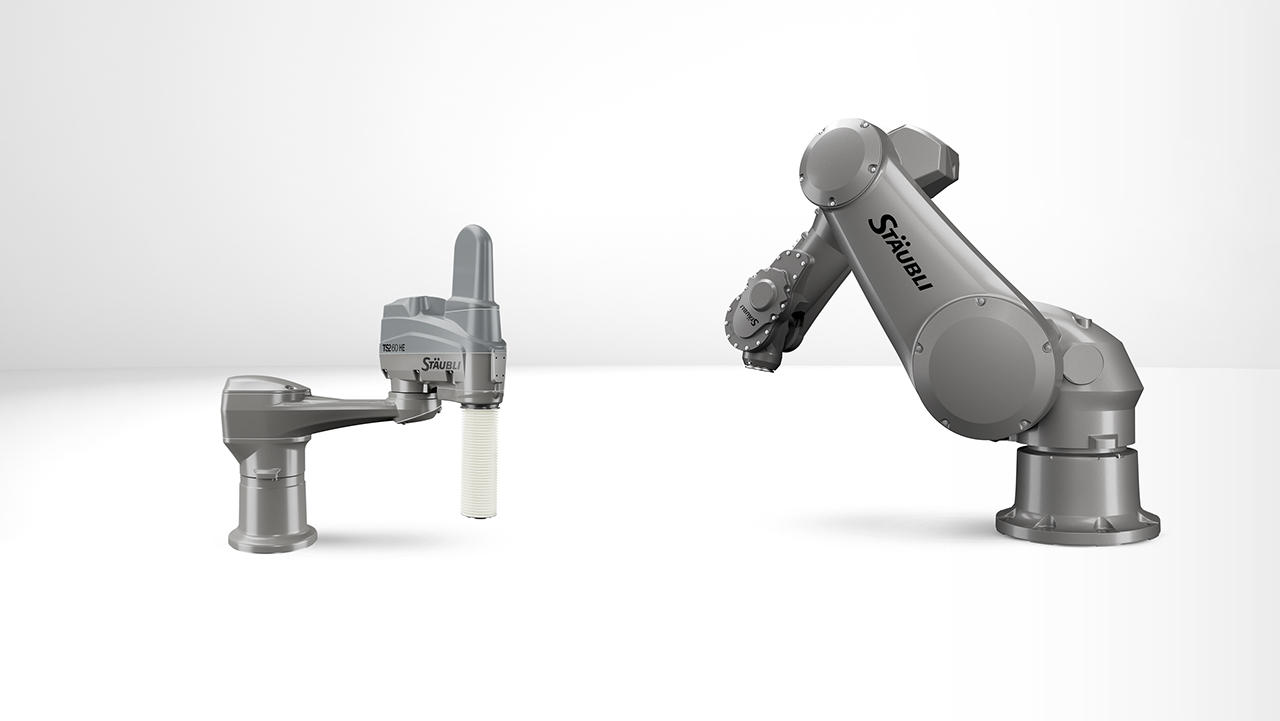SUCCESS STORY
Freshly caught – and picked by a robot
The port of Guilvinec is one of the most important in all of France and has recently become perhaps one of the most advanced in the world. In the auction hall, two Stäubli TX200 HE robots handle the fully automated picking of freshly caught fish.
CUSTOMER BENEFITS
- Reliable automation with HE robots
- Relieving employees of heavy physical work
- Simple system operation
- Washdown-capable robots
TASK
Automation of fresh fish handling right in the harbor
The port of Guilvinec in Brittany is one of the most important in France in terms of fresh fish handling. And a look in the auction hall offers a real surprise: Two large Stäubli robots celebrate their premiere and relieve employees of heavy manual labor.
Nearly 14,000 tons of fish and shellfish from coastal and deep-sea fishing are sold at the Guilvinec fish auction each year, with another 32,000 tons added to the annual volume of other fish auctions. Every year, these 14,000 tons must be unloaded, refrigerated, sorted, presented at the daily auction and provided by commission. This takes place in containers weighing up to 40 kg, and up until now has been done using forklifts and to a large extent manually – in a damp and cold environment.
It is obvious that these working conditions are not exactly conducive to good health. The question was: What work steps can be automated to improve working conditions during auctions and overall?
SOLUTION
Robot-assisted picking
A plant engineer developed a solution based on two core elements: RFID tagging of the containers and robotic picking of the fresh fish sold at the auctions. It all starts with unloading the boats, which is now done using RFID technology on registered auction containers. With the integrated chips, they can be reliably identified and located, and their contents determined. This is the prerequisite for automating the process – and for transparency throughout the entire material flow.
Then the weighing of the containers and distribution of the auctioned goods were automated. An impressive installation with two robots and eight distribution lines comprise this innovation. The sold goods are transported via a conveyor system to an automated picking zone. Two Stäubli TX200 HE six-axis robots handle the containers. The stacks are then distributed into eight accumulation conveyors and transported from there.
CUSTOMER USAGE
Relieving employees of physically demanding tasks
Picking goods – a heavy and particularly demanding activity – is now done without manual intervention. The goal of improving the truly difficult working conditions could be achieved one hundred percent with this solution.
The two Stäubli TX200 six-axis robots in HE design manage perfectly in the extreme conditions of the fish auction hall. Cold, humidity and salt water cannot harm these robust machines. Design features such as complete encapsulation and a corrosion-resistant design enable them to operate with high precision and achieve a long service life despite the harsh environmental conditions.
With a reach of nearly 2.2 meters and a load capacity of 130 kilograms, the two Stäubli TX200 HEs have the ideal attributes for handling the heavy fresh fish containers. Another benefit of these robots is their ease of operation: Robot experts are not required for operating the picking system. Rather, the human-robot interface is designed to be as self-explanatory as possible. This can easily be achieved with Stäubli robots.
